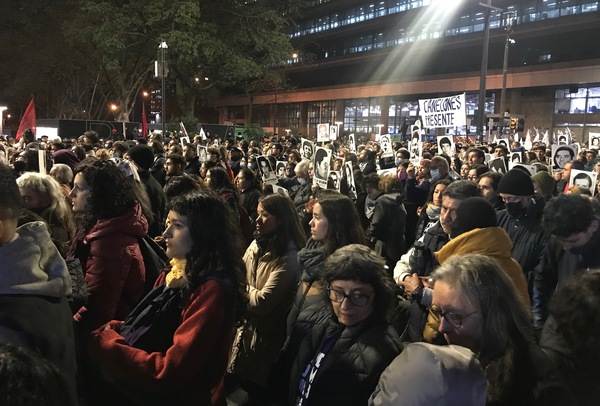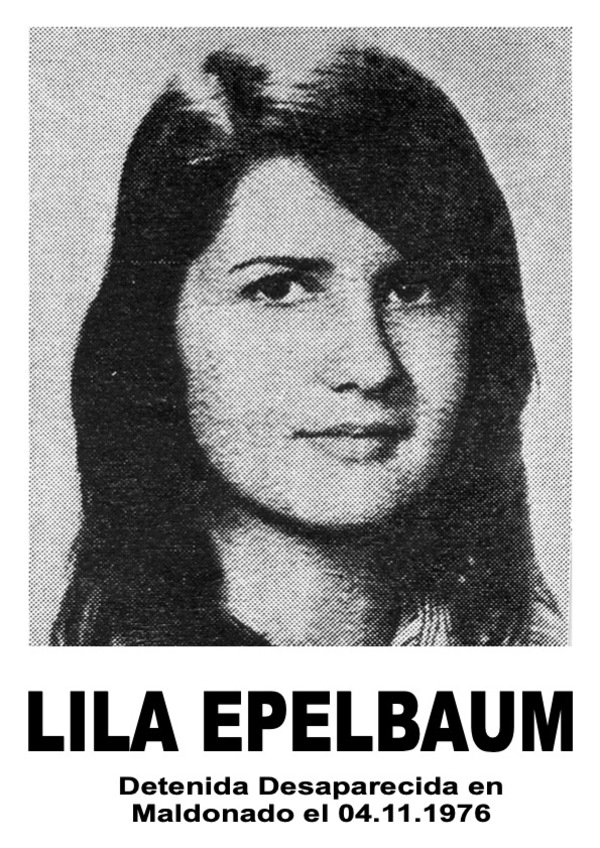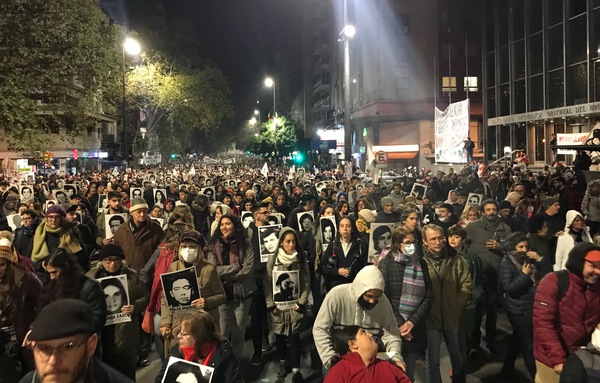The Disappeared
On the night of Friday, 20 May I participated in a march held annually in the city of Montevideo, Uruguay since 1996. Similar marches were held in cities and towns in every part of the country.

On the main street, 18 July, that runs east to west from the old city to the city’s largest park, tens of thousands came out to walk silently (or at least with a murmuring whisper) in memory of the disappeared.
The poster reproduced here is an example of the 197 different posters carried by some of the participants in the march– one for each of the Uruguayan nationals disappeared by the United States backed civil and military dictatorship that gripped the country from 1973 to 1985.
Lila Epelbaum Slotopolsky was detained, taken prisoner by her government in Maldonado, Uruguay on the fourth of November, 1976. Her family and friends never saw nor heard from her again. They only know that she was secretly murdered by the state and her body secretly disposed of. She is one of 197 desaparecidos (disappeared) during that brutal period of suppression.

The U.S. State Department under leadership of Henry Kissinger and the Central Intelligence Agency under leadership of George H.W. Bush, then Admiral Stansfield Turner, then William J. Casey implemented Operation Condor under the administrations of President Richard Nixon and President Gerald Ford.
In Argentina, Chile, and Uruguay people feared by those governments and by the United States for their dissident viewpoints and outspoken opposition, labeled “subversives”, were detained without trial and often killed. One method of disappearing “subversives” was to fly them out over the ocean and dump them out of the plane. This took care of both the murder of the individual and disposal of their body. Very efficient.
The people marching in Montevideo Friday night want to keep their government accountable, forty-five years later, for the crimes of the state during that period– primarily the murder of 197 people. This is 197 too many and not a big number. So you see that Uruguayans have a low threshold of tolerance for state sponsored murder. I would say, and infringement of liberties in general. More, they insist that their government be accountable to them.

We stand together, moving slowly forward, silently, present. Present with thousands who are present. Present with 197 who died for being outspoken against living under the dictates of a government that ruled at the point of a gun.
The front of the march reaches Plaza de Cagancha, also known as Plaza Libertad, liberty place. A public address system plays the national anthem and all present sing together:
Liberty or death. That which our hearts and souls demand. Liberty. That which heroes will know to accomplish.
I love it. It characterizes liberty not as something to be had or taken, but rather something to demand, and to accomplish continually through heroic choices.
As in the state of New Hampshire, the call of the patriots, “Liberty or Death”. To always demand liberty, even if that requires accepting death (an eventual certainty) as a proximate possibility.
Sources
- Marcha del Silencio vuelve a congregar una multitud que reclama verdad y justicia, El Observador, 20 May, 2022.
- Madres y Familiares de Uruguayos Detenidos Desaparecidos
- Operation Condor, Wikipedia.org
- Death flights, Wikipedia.org
- List of CIA Directors, Britannica